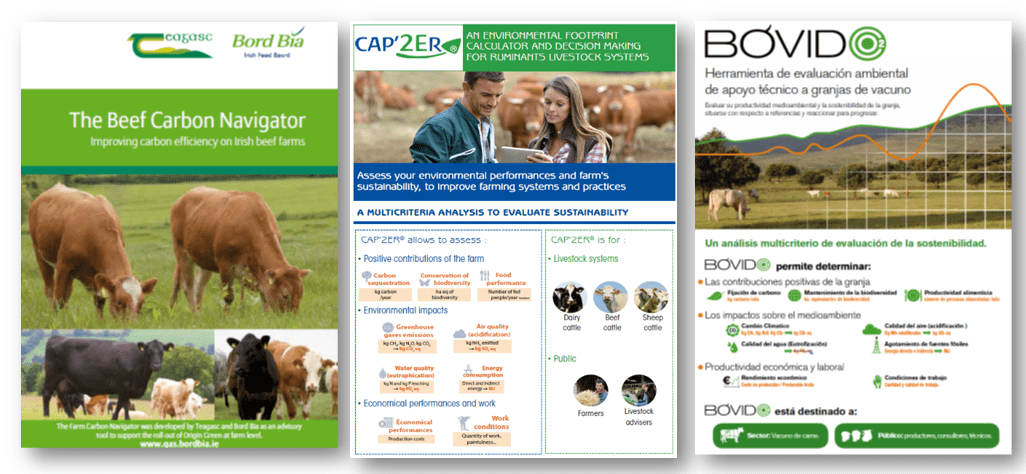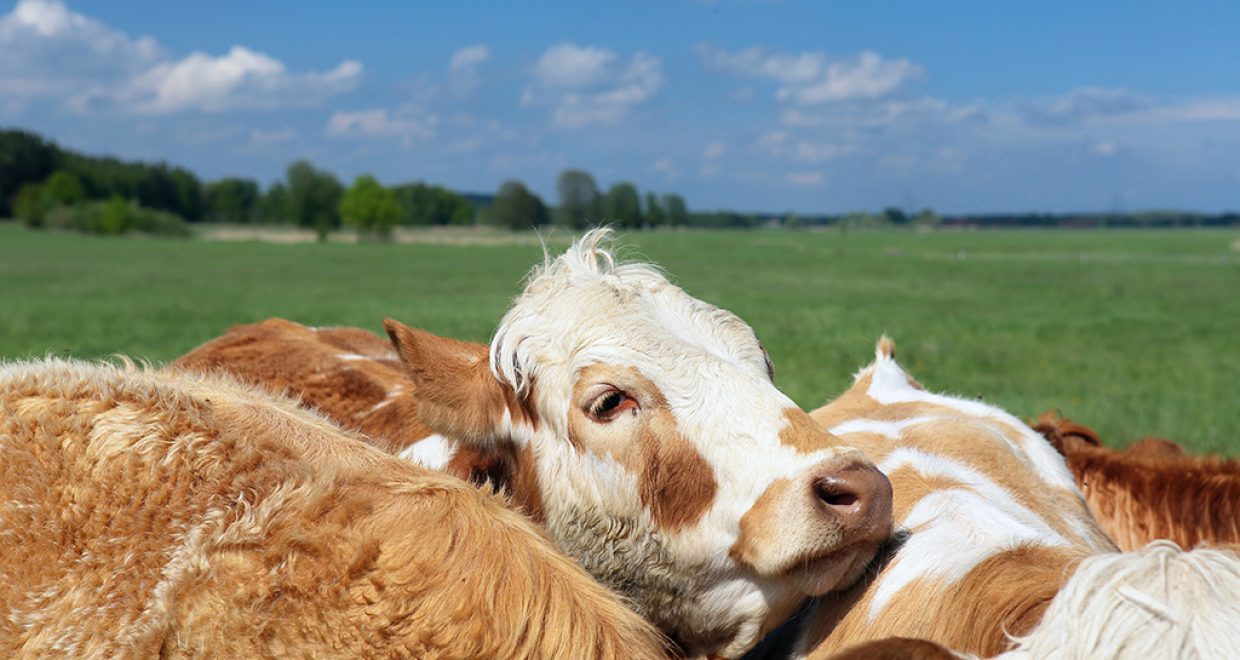LIFE BEEF CARBON: Combating the climate impact of beef
The animal article of the month for April is “LIFE BEEF CARBON: a common framework for quantifying grass and corn based beef farms’ carbon footprints” by O’Brien et al.
European beef production will encounter difficult challenges in the coming years. The “so-called” grand societal challenge, climate change, is one of the biggest, threatening to damage the environment and reduce the security of our food supply. Most scientists accept climate change is occurring and that excessive carbon emissions from the production of goods and services are causing the issue. To prevent climate change, large and permanent reductions in carbon emissions are urgently required on a global scale. Most countries are committed to making the necessary emission reductions and many have set strong targets for agriculture.
Beef production is a large source of agricultural carbon emissions. LIFE BEEF CARBON is a voluntary European initiative designed to support the beef sector improve its carbon efficiency or footprint. Over 2,000 farms, throughout France, Ireland, Italy and Spain are partaking in the initiative. The overarching goal of LIFE BEEF CARBON is to provide a secure beef supply, while reducing carbon emissions by 119,000 tonnes, below 2016 levels, in the final year of the initiative. The programme expects to do this at low cost and without declines in soil health, water quality, air quality and biodiversity.
To achieve these objectives, a common framework was created to determine reductions in carbon emissions from European beef farms. The framework was constructed from an inventory of farms tools quantifying carbon emissions. The inventory showed it is unfeasible to measure carbon emissions at the farm scale, but emissions can be modelled. Many farm models were identified to compute carbon emissions, but the approaches applied vary. Consequently, differences in farms emissions are sometimes due to computing method.

The framework developed for LIFE BEEF CARBON avoids modelling method causing emission differences by using one approach, life cycle assessment. The method was applied with Carbon Navigator (Ireland), CAP’2ER (France and Italy) and Bovid CO2 (Spain). These models determine the amount of on-farm and pre-farm carbon emissions a beef production system generates in a year. The total carbon emission from a farm is expressed in terms of beef output, which was standardized across the models to calculate a farm’s carbon footprint. The harmonized models were tested on French, Irish, Italian and Spanish beef farms. The results of the test indicated life cycle models were not accurate when applied outside of the circumstances they were designed for. Thus, for the common framework, region-specific models were chosen to calculate the carbon footprint of a beef farm. The finding has important implications for international carbon assessments, implying that global models are unlikely to be sufficiently sensitive to quantify farm emissions at national scales.
Currently, LIFE BEEF CARBON’s framework is quantifying the affect of action plans on beef farms carbon footprint. The action plans are compilations of measures for reducing emissions. The full impact of the initiative’s plans will not be known until the final year, but results to date are promising, indicating beef farms will make the required reduction in carbon footprint.
The animal article of the month for April “LIFE BEEF CARBON: a common framework for quantifying grass and corn based beef farms’ carbon footprints” is available Open Access.
Authors: D. O’Brien, J. Herron, J. Andurand, S. Caré, P. Martinez, L. Migliorati, M. Moro, G. Pirlo and J-B Dollé
The animal Article of the Month is selected by the Editor-in-Chief and is freely available for one month. View the recent selections





